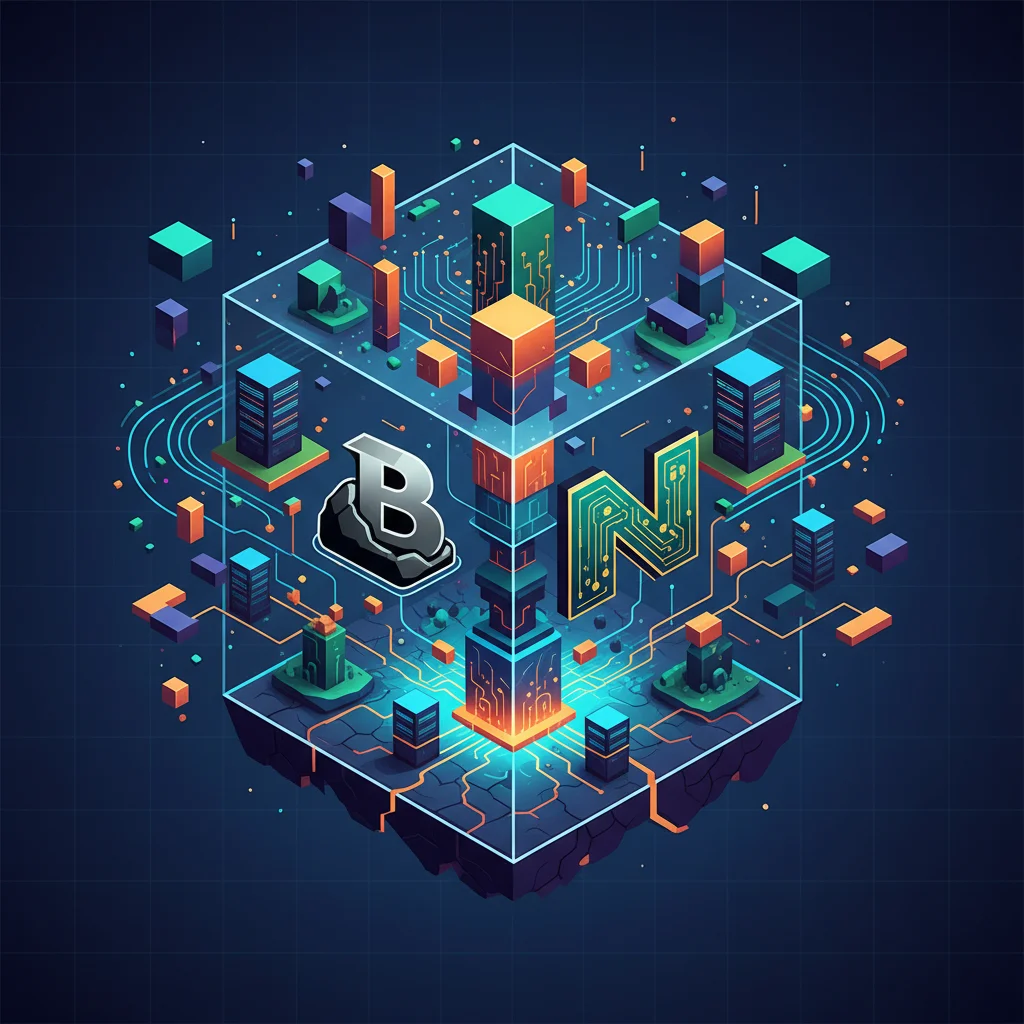
The $40 Billion Land Grab: Why BlackRock and Nvidia Are Buying the Physical Future of AI
In the digital gold rush of artificial intelligence, we often talk about the brilliant minds, the complex algorithms, and the game-changing software. But what if the next frontier isn’t just code, but concrete? What if the most strategic move is to own the physical ground where the digital revolution is actually happening?
A seismic shift is underway, and it just came with a staggering price tag. A powerhouse consortium including investment giant BlackRock, AI chip king Nvidia, and cloud titan Microsoft is orchestrating a takeover of Aligned Data Centers valued at an eye-watering $40 billion, including debt. This isn’t just another corporate acquisition; it’s a declaration. The future of AI will be built on a foundation of immense physical infrastructure, and the race to own it has officially begun.
For developers, entrepreneurs, and tech professionals, this move is more than just a headline—it’s a glimpse into the future architecture of our industry. Let’s break down what this colossal deal means and why it matters for everyone from a solo programmer to a global enterprise.
The Deal of the Decade: Who’s Buying What?
At its core, this is a story about a very special type of real estate. The target, Aligned Data Centers, isn’t your average server farm. They specialize in building and operating the high-density, liquid-cooled facilities that are essential for housing the thousands of power-hungry GPUs needed to train and run modern artificial intelligence models.
The buyers’ list reads like a who’s who of global power, each bringing a critical piece to the puzzle. This isn’t just a financial play; it’s a strategic alliance to control the engine room of the 21st century’s most transformative technology.
Here’s a breakdown of the key players in this consortium and their motivations:
| Company/Entity | Role in the Consortium | Strategic Motivation |
|---|---|---|
| BlackRock & GIP | Financial & Infrastructure Muscle | Investing in long-term, essential infrastructure. They see data centers as the new toll roads or power plants—critical utilities for the digital economy. |
| Nvidia | The AI Hardware King | Ensuring a premier home for their GPUs. This is vertical integration; they don’t just want to sell the chips, they want to influence the ecosystem where their chips thrive. |
| Microsoft | The Anchor Tenant | Securing massive, reliable computing capacity for their Azure cloud platform to meet exploding customer demand for AI and machine learning services. |
| MGX (Abu Dhabi) | Sovereign & Geopolitical Investor | A strategic national investment in a foundational technology, diversifying their economy and gaining a foothold in the global AI supply chain. |
This group isn’t just buying buildings; they are buying capacity, control, and a significant stake in the future of the cloud. The consortium plans to expand Aligned significantly, signaling their belief that the current demand for AI-ready computing is just the tip of the iceberg.
Beyond the Snap: Why Snapchat Charging for Memories is a Game-Changer for Tech
Why AI Needs a Different Kind of Home
For years, data centers were all about maximizing space and standardizing airflow for general-purpose computing. But the hardware that powers today’s AI—namely, thousands of GPUs clustered together—generates an incredible amount of heat and consumes power on a scale never seen before. A single Nvidia H100 GPU can draw 700 watts at peak, and a standard rack can hold dozens of them.
This creates a new set of engineering challenges that traditional data centers simply can’t handle. The innovation required is immense, touching everything from power distribution to advanced cooling systems.
Let’s compare the old world with the new:
| Feature | Traditional Data Center | AI-Optimized Data Center (like Aligned’s) |
|---|---|---|
| Primary Workload | Web hosting, storage, SaaS applications | Large-scale machine learning model training and inference |
| Power Density | Low to medium (5-15 kW per rack) | Extremely high (50-100+ kW per rack) |
| Cooling Method | Primarily air-cooled (hot aisle/cold aisle) | Advanced liquid cooling (direct-to-chip, immersion) |
| Key Hardware | CPUs, standard networking | Massive clusters of GPUs, high-speed interconnects (e.g., InfiniBand) |
This technical reality is the “why” behind the $40 billion price tag. The demand for this specialized infrastructure is exploding, and the supply is limited. Whoever controls these facilities effectively controls a major bottleneck in the advancement of artificial intelligence.
What’s truly fascinating is the vertical integration at play. Nvidia, the chipmaker, is investing in the data center. Microsoft, the cloud provider and primary customer, is also an investor. This creates a tightly-coupled ecosystem where hardware innovation can be deployed faster and capacity can be guaranteed. It’s a move to build a defensible moat not out of code, but out of capital, concrete, and control over the physical supply chain of computing. This signals a future where the biggest players in AI will be those who master both the digital and the physical realms.
The Ripple Effect: What This Means for the Tech Ecosystem
A deal of this magnitude doesn’t happen in a vacuum. It sends shockwaves through the entire industry, impacting everyone from developers to startups to end-users.
For Developers and Tech Professionals
On one hand, this massive investment means more powerful and accessible AI platforms are on the horizon. The expansion of facilities like Aligned’s will eventually translate to more capacity on cloud platforms like Azure, enabling developers to build and deploy more sophisticated models. This is good news for anyone involved in programming for AI and machine learning. On the other hand, it reinforces the dominance of a few large cloud providers, potentially leading to less competition and higher long-term costs for compute.
For Entrepreneurs and Startups
For startups building AI-powered SaaS products, this is a double-edged sword. The underlying infrastructure will become more robust, allowing them to build on the shoulders of giants. However, for any startup dreaming of competing in the infrastructure or foundational model space, the barrier to entry just got exponentially higher. Competing now requires not just brilliant software and innovation, but tens of billions in capital to secure the necessary hardware and facilities.
The Cyberattack That Halted an Empire: What Jaguar Land Rover’s Shutdown Teaches Every Startup
For Cybersecurity and Automation
Centralizing so much computing power into a smaller number of massive, highly valuable facilities creates new challenges for cybersecurity. These data centers become incredibly high-value targets for state-sponsored and criminal actors. The need for robust physical and digital security will be paramount. Simultaneously, the management of these complex facilities will drive further automation, using AI to optimize power usage, cooling, and predictive maintenance.
The Challenges on the Horizon: Power, Planet, and Politics
While this deal unlocks immense potential, it also highlights some of the biggest challenges facing the AI industry. The first is power. The energy consumption of these AI data centers is monumental, placing a huge strain on local power grids and raising serious questions about sustainability. According to some estimates, the AI industry’s electricity consumption could rival that of a small country within a few years (source).
The second is centralization. As a handful of corporations and sovereign wealth funds come to own the foundational layer of the world’s most important technology, it raises questions about competition, censorship, and control. The geopolitics of who owns the world’s compute is rapidly becoming as important as who owns the world’s oil reserves.
Apple's Privacy Wall Under Siege: What the UK's New Data Demand Means for Tech's Future
The Foundation for Tomorrow’s World
The $40 billion acquisition of Aligned Data Centers is a landmark moment. It’s a clear signal that the abstract world of artificial intelligence is fundamentally tethered to the very real, very expensive world of physical infrastructure. This isn’t just about building bigger server rooms; it’s about building the factories of the 21st century, where the raw materials are data and electricity, and the product is intelligence itself.
For all of us in the tech world, this is a powerful reminder. The elegant lines of code we write, the innovative SaaS platforms we build, and the automated systems we deploy all run on a physical foundation. And right now, the titans of industry are spending billions to own that foundation, reshaping the technological landscape for decades to come.


